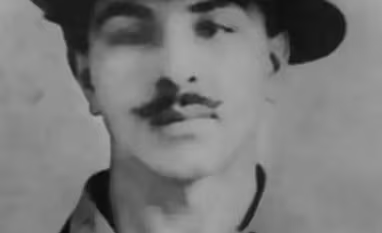
Bhagat Singh was a fearless revolutionary who dedicated his life to India’s freedom struggle. Born into a patriotic Sikh family on September 28, 1907, in Banga, Punjab, he was exposed to nationalist ideas from an early age. The Jallianwala Bagh massacre of 1919 deeply impacted him, fueling his desire to free India from British oppression. Unlike many of his contemporaries, Bhagat Singh believed that independence was not just about driving out the British but about creating an egalitarian and socialist society where every citizen had equal rights and opportunities.
Joining the Revolutionary Struggle
To achieve his vision, Bhagat Singh became actively involved in revolutionary organizations. He joined the Hindustan Socialist Republican Association (HSRA), a group committed to overthrowing British rule through armed struggle. He was deeply inspired by socialist and Marxist ideologies, believing that true freedom could only be achieved through the abolition of class oppression and social injustices.
Avenging Lala Lajpat Rai’s Death
In 1928, nationalist leader Lala Lajpat Rai was leading a protest against the Simon Commission, which was sent by the British government to discuss constitutional reforms but did not include any Indian representatives. The protest was met with brutal police violence, and Superintendent James A. Scott ordered a ruthless lathi charge, which resulted in serious injuries to Lala Lajpat Rai. He succumbed to his injuries a few weeks later.
Determined to avenge Rai’s death, Bhagat Singh, along with Shivaram Rajguru, Sukhdev Thapar, and Chandrashekhar Azad, planned to assassinate Scott. However, in a case of mistaken identity, they shot J.P. Saunders, an assistant superintendent of police, instead. This act was not just revenge; it was a warning to the British that their oppressive actions would not go unchallenged.
The Central Legislative Assembly Bombing
On April 8, 1929, Bhagat Singh and Batukeshwar Dutt executed a daring protest by throwing two non-lethal bombs inside the Central Legislative Assembly in Delhi. The bombs were intentionally designed to avoid casualties, as the aim was not to kill but to make a bold statement against the Public Safety Bill and the Trade Disputes Bill, which sought to suppress workers’ rights and increase governmental control.
After throwing the bombs, they did not flee. Instead, they stood firm, shouting “Inquilab Zindabad!” (Long Live the Revolution!) and voluntarily surrendered to the police. Their intention was to use the trial as a platform to spread revolutionary ideas, emphasizing that their actions were driven by patriotism, not personal vendetta.
Trial and Execution
Bhagat Singh’s trial became a historic moment in India’s freedom struggle. Instead of pleading for mercy, he used the courtroom as a stage to propagate his vision of socialism, equality, and justice. He openly challenged British rule and condemned the exploitation of India’s poor and working-class people. His courage and intellect during the trial won him admiration across the nation.
Despite nationwide protests and appeals for clemency, Bhagat Singh, along with Rajguru and Sukhdev, was sentenced to death. On March 23, 1931, they were hanged in Lahore Central Jail, a day earlier than scheduled, fearing mass protests.
A Symbol of Courage and Sacrifice
Bhagat Singh’s execution at just 23 years old turned him into a martyr and an enduring symbol of courage, sacrifice, and unwavering commitment to justice. His belief in revolutionary change, social justice, and an exploitation-free society continues to inspire millions today.
His famous words, “They may kill me, but they cannot kill my ideas. They can crush my body, but they will not be able to crush my spirit,” reflect his undying faith in the power of revolutionary thought.
Even today, Bhagat Singh’s ideology remains relevant, reminding us that true freedom is not just about independence from foreign rule but also about justice, equality, and empowerment for all.
SOURCES : –
- Introduction to Dreamland – Book
- https://bhagatsingh.in